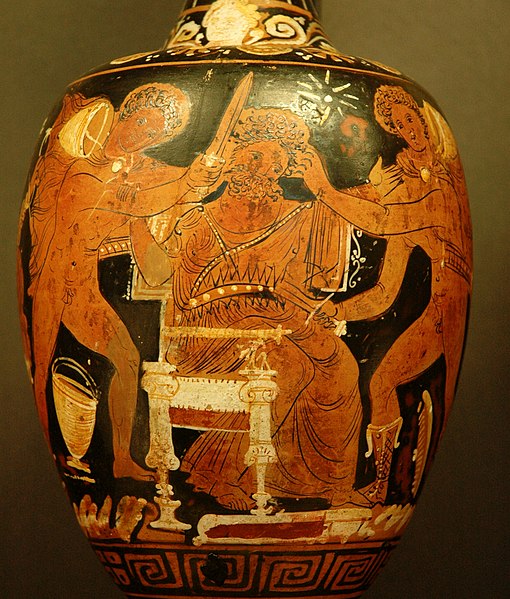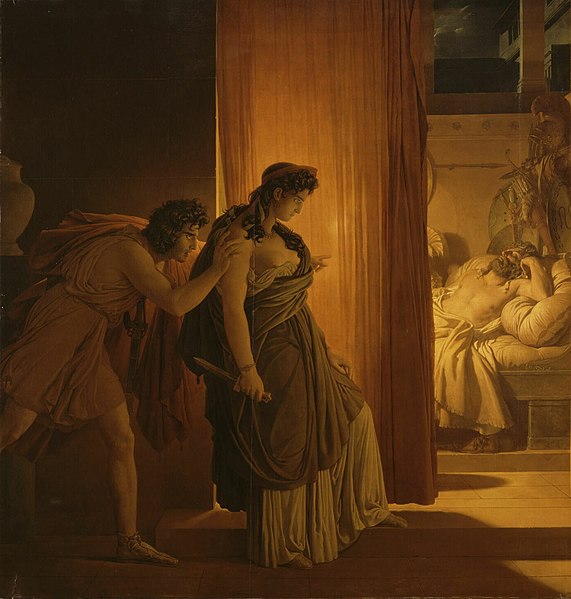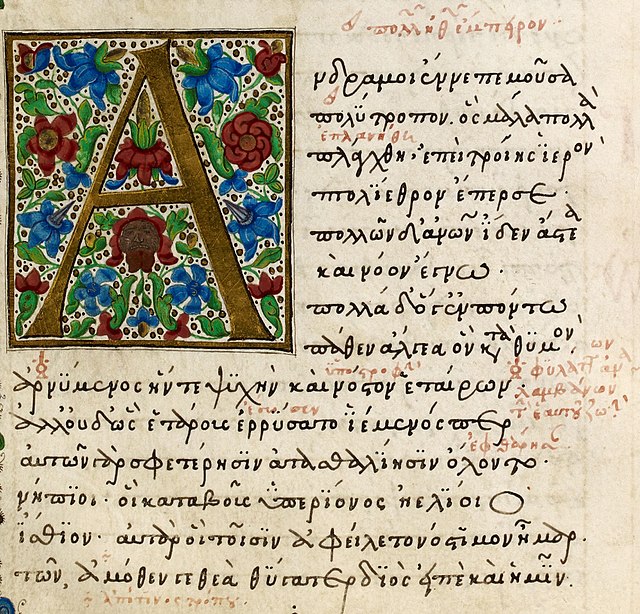Aegisthus was a figure in Greek mythology. Aegisthus is known from two primary sources: the first is Homer's Odyssey, believed to have been first written down by Homer at the end of the 8th century BC, and the second from Aeschylus's Oresteia, written in the 5th century BC. Aegisthus also features heavily in the action of Euripides's Electra, although his character remains offstage.
Aegisthus being murdered by Orestes and Pylades – The Louvre
Pierre-Narcisse Guérin's Clytemnestra and Agamemnon, in which Aegisthus appears as a shadowy figure pushing Clytemnestra forward
The Odyssey is one of two major ancient Greek epic poems attributed to Homer. It is one of the oldest extant works of literature still widely read by modern audiences. As with the Iliad, the poem is divided into 24 books. It follows the Greek hero Odysseus, king of Ithaca, and his journey home after the Trojan War. After the war, which lasted ten years, his journey from Troy to Ithaca, via Africa and southern Europe, lasted for ten additional years during which time he encountered many perils and all of his crewmates were killed. In his absence, Odysseus was assumed dead, and his wife Penelope and son Telemachus had to contend with a group of unruly suitors who were competing for Penelope's hand in marriage.
15th-century manuscript of Book I written by scribe John Rhosos (British Museum)
A mosaic depicting Odysseus, from the villa of La Olmeda, Pedrosa de la Vega, Spain, late 4th–5th centuries AD
Charles Gleyre, Odysseus and Nausicaä
Odysseus Overcome by Demodocus' Song, by Francesco Hayez, 1813–15






